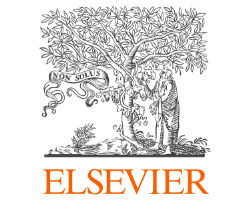Teaching Programming Using the Robot-Based Learning Approach
Abstract
This paper discusses learning theories, STEM, educational robotics as well as the current generation of students found in classrooms by reviewing previous and current academic literature on these topics, to assist in ascertaining the current advancements and theories related to the Robot-based learning approach as well as how these advancements have helped improve this approach and enabled educators to better make use of it. Furthermore, this paper reviews previous academic literature on computer programming to discuss the current learning approaches in use and the kind of learning tools being utilized. Once this topics are reviewed the reader can have a clear picture of the learning approach, what learning theory does it belong too, the type of students found in the classroom as well as what motivates them and the subject that is being taught as well as the different learning tools for this subject. The reader will also learn why improving the effectiveness of how programming is learned helps create more students good in STEM and how it assists in realising the Malaysian Educational Development Plan. This paper reviewed literature from the year 2014 and above as the information is more relevant and current, except for literature that is from a leading or renowned individual in any field that is being discussed in this dissertation.
Downloads
References
T. J. Kennedy, and M. R. L. Odell, “Engaging Students in STEM Education,” Science Education International, vol. 25, no. 3, pp. 246–258, 2014.
H. M. Fadzil, and R. M. Saat, “Enhancing STEM education during school transition: Bridging the gap in science manipulative skills,” Eurasia Journal of Mathematics, Science and Technology Education, vol. 10, no. 3, pp. 209-218, 2014.
H. Mahdin, N. Senan, S. Kasim, N. Ibrahim, and N. A. Abdullah, “Teaching computer programming to ipad generation,” ARPN Journal of Engineering and Applied Sciences, vol. 11, no. 24, pp. 14082–14084, 2016.
X. Zhang, C. Zhang, T. Stafford, and P. Zhang, “Teaching introductory programming to IS students : The impact of teaching approaches on learning performance,” Journal of Information Systems Education, vol. 00424, no. 2, pp.147–156, 2013.
Ministry of Education Malaysia, STEM Education: Policies And Prospects Toward Achieving International Standard And Meeting National Development Needs, 2018. [Online]. Available: https:// www.akademisains.gov.my/download/STEM%20Education_Dr%20Azian.pdf. [Accessed: June 2020].
K. Osman, and R. M. Saat, “University of M. Editorial,” Science Technology, Engineering and Mathematics (STEM) education in Malaysia, vol.10, no. 3, pp. 153–154, 2014.
Ministry of Education Malaysia, “Executive Summary Malaysia Education Blueprint 2015-2025 (Higher Education),” 2018. [Online]. Available: https:// www.um.edu.my/ docs/default-source/about-um_document/media-centre/um-magazine/4-executive-summary-pppm-2015-2025.pdf?sfvrsn=4. [Accessed: July 2020].
Anonymous, “Computer Programming Courses, (n.d.),” [Online]. Available: https:// www.edx.org/learn/computer-programming. [Accessed: June 2020].
Anonymous, “Computer Programming Languages, (n.d.),” [Online]. Available: https:// www.computerscience.org/resources/computer-programming-languages/. [Accessed: June 2020].
F. Kalelioglu, “A new way of teaching programming skills to K-12 students: Code.org,” Computers in Human Behavior, vol. 52, pp. 200–210, 2015.
Blikstein, P., Worsley, M., Piech, C., Sahami, M., Cooper, S., & Koller, D, “Programming Pluralism: Using Learning Analytics to Detect Patterns in the Learning of Computer Programming,” Journal of the Learning Sciences, vol. 23, no. 4, pp. 561–599, 2014.
K. W. Lai, and K. S. Hong, “Technology use and learning characteristics of students in higher education: Do generational differences exist?,” British Journal of Educational Technology, vol. 46, no. 4, pp. 725–738, 2015.
H.Tootell, M. Freeman, and A. Freeman, “Generation alpha at the intersection of technology, play and motivation,” Proceedings of the Annual Hawaii International Conference on System Sciences, pp. 82-90, 2014.
J. Piaget, Constructivism (learning theory) Constructivist theory, History, 2016.
C. C. Bonwell, and J. A. Eison, “Active Learning: Creating Excitement in the Classroom. ASHE-ERIC Higher Education Reports,” ERIC Clearinghouse on Higher Education, Washington, DC: The George Washington University, pp. 1-121, 1991.
C. Brame, “Active Learning,” Vanderbilt University Center for Teaching, 2016. [Online]. Available: https:// cft.vanderbilt.edu/active-learning/. [Accessed: June 2020].
A. Özgür, S. Lemaignan, W. Johal, M. Beltran, M. Briod, L. Pereyre, and P. Dillenbourg, “Cellulo: Versatile Handheld Robots for Education,” Proceedings of the 2017 ACM/IEEE International Conference on Human-Robot Interaction - HRI ’17, pp. 119–127, 2017.
D. Conti, S. Di Nuovo, S. Buono, and A. Di Nuovo, “Robots in Education and Care of Children with Developmental Disabilities: A Study on Acceptance by Experienced and Future Professionals,” International Journal of Social Robotics, vol. 9, no. 1, pp. 51–62, 2017. [Online].
L. Armesto, P. Fuentes-Durá, and Perry, D, “Low-cost Printable Robots in Education,” Journal of Intelligent & Robotic Systems, vol. 81, no. 1, pp. 5–24, 2016.
J. M. Angel-Fernandez, and M. Vincze, “Determining the effect of programming language in educational robotic activities,” in RO-MAN 2017 - 26th IEEE International Symposium on Robot and Human Interactive Communication, Institute of Electrical and Electronics Engineers Inc, pp. 658-663, 2017.
K. Y. Y Chin, Z.-W. W Hong, and Y.-L. L. Chen, “Impact of Using an Educational Robot-Based Learning System on Students’ Motivation in Elementary Education,” IEEE Transactions on Learning Technologies, vol. 7, no. 4, pp. 333-345, 2014.

























